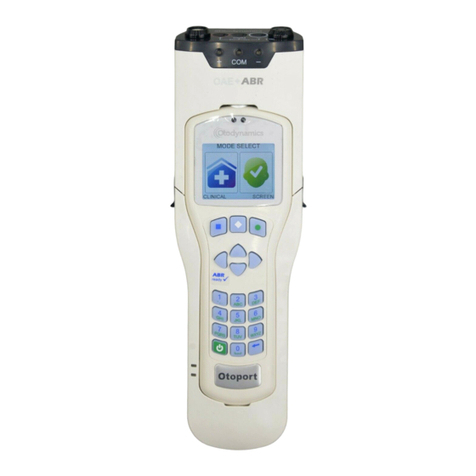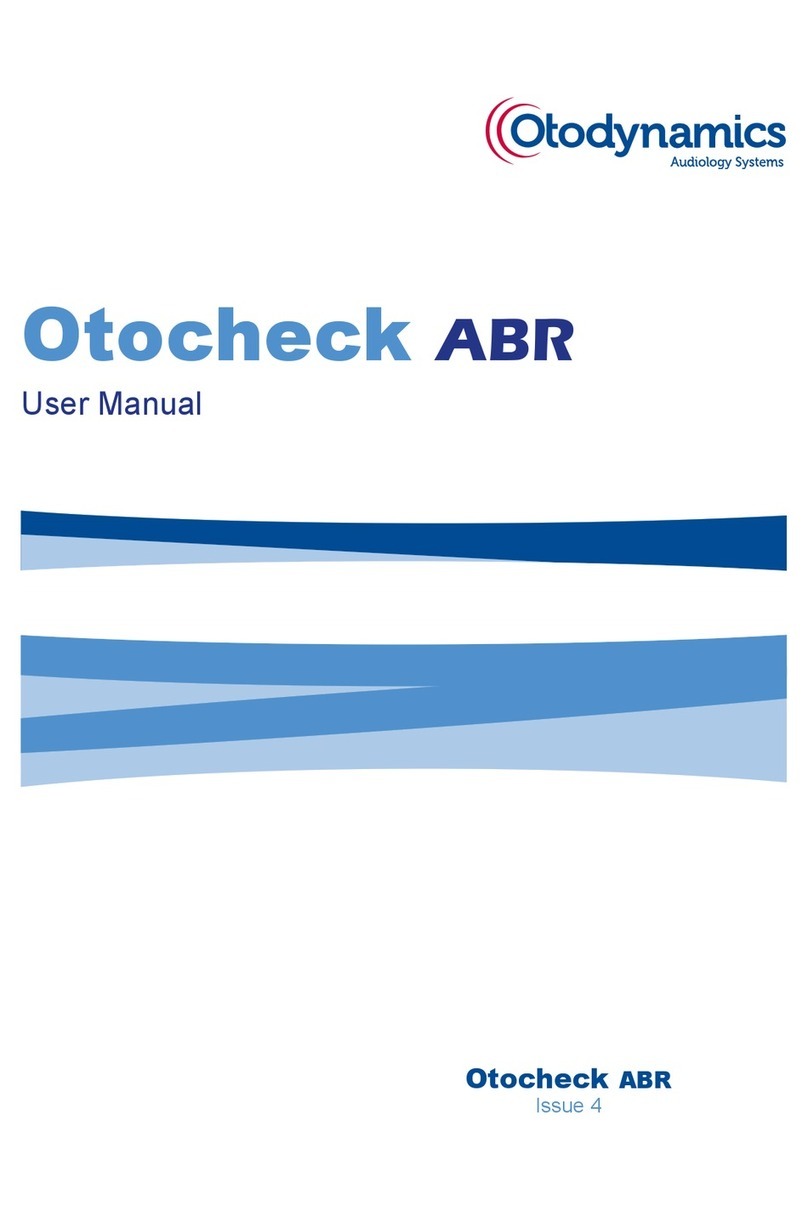
CHAPTER ONE
Introduction
10
Introduction
1Introduction
This manual provides instructions for use for two compact, handheld
instruments, the Otoport OAE+ABR (Otoport Lite model) and the Otoport
Lite OAE system.
1.1 Intended Use
This Otodynamics Otoport/Otocheck OAE+ABR device is indicated for use
when there is a requirement to screen for hearing disorders by objective
and non-invasive means. ABR, TEOAE and DPOAE screening test
results are automatically interpreted and a clear ‘Pass’ or ‘Refer’ result is
presented to the user who will be a trained screener, audiologist or medical
professional. Use of the device is indicated when the patient is unable
to give reliable voluntary responses to sound, especially with infants.
Use of the device facilitates the early detection of hearing loss and its
characterization.
The TEOAE and DPOAE analytical functions of the device are
indicated when objective non-invasive clinical investigations require the
characterization and monitoring of the functional status of the peripheral
auditory function. For this purpose the device is intended to be used by
audiologists or other audiologically skilled professionals. These TEOAE
and DPOAE tests are applicable to populations of any age to obtain
objective evidence of peripheral auditory function.






























